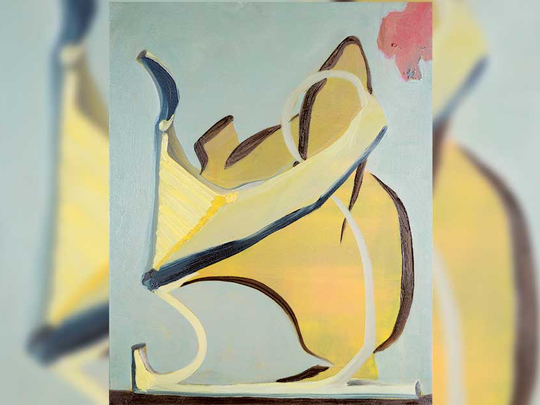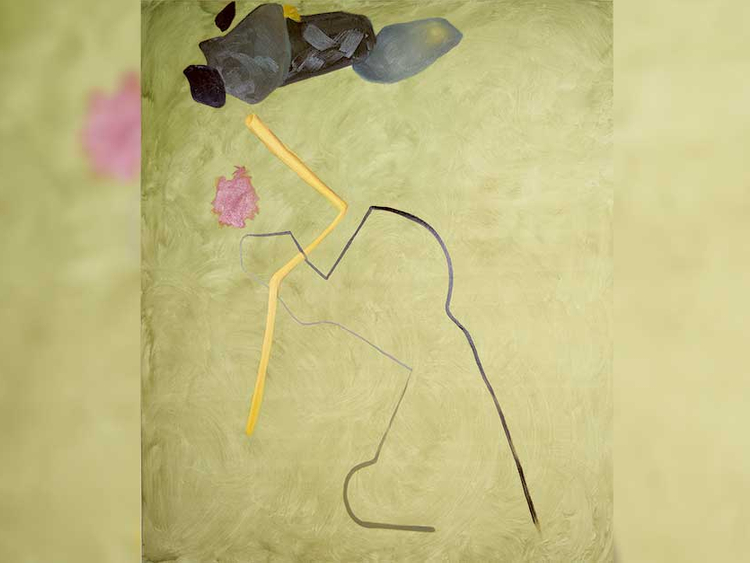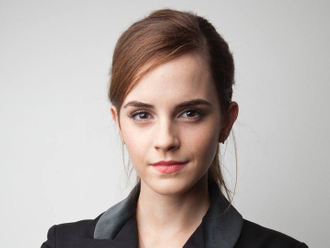
Irish artist Damien Flood’s abstract paintings are based on his research on philosophy, theology, alchemy, art history and the natural sciences, and they explore the mutability of “reality” and language. But his first exhibition in Dubai, “Infinite Plane” is different because it is inspired by the city, and is based on physical research rather than books.
The Dublin-based artist got the opportunity to do a two-week research trip to the UAE after winning the Elizabeth Fitzpatrick Travel Award. His abstract paintings featuring simple lines and squiggles, squeegee trails of paint, and minimalist forms convey the mood and feeling of the landscape, while also delving into the psychology of being a spectator in a dynamic, new place.
We spoke to Flood about his work and his Dubai show. Excerpts:
How was your research for this show different from your other work?
As an artist I endeavour to ask questions about the world we live in and to bring back a bit of mystery and sense of wonder. My research mainly involves reading early writings on philosophy and theology, especially old, defunct belief systems.
This show is different because instead of reading books I did physical research. I came here with absolutely no agenda and had no idea what to expect. I got a map of Dubai and started walking around the streets. At the end of the day I would go through the photographs I had taken, make notes about my feelings and ideas and do some sketches and watercolour paintings to see what kind of visual language was emerging from my experiences of the city.
What are the things you noticed while walking around?
I wanted to see where the old parts and the new parts of the city were and where they crossed over. So I spent a lot of time in Deira and Bur Dubai. As I strolled through these areas, I was struck by the fact that people still wear traditional clothes and maintain their connection with the desert.
Europeans have left these things behind as they move forward, but here it is heart-warming to see that even young people hold on to the culture, and that the desert has been preserved despite the rapid pace of progress and modernisation.
I was really surprised to see the different cultures that live together here. One of the themes running through the show is time, because I feel Dubai has managed to compress time by building in just over a decade what would otherwise take more than a century to achieve. Being here and seeing all this got me thinking about time, life, culture and relationships with the landscape.
How did you translate your thoughts into these paintings?
I do a lot of research before beginning a new body of work, but I always start a painting with no plan in mind. So when I started these paintings I had no idea what was going to come out. I was like an archaeologist exploring my own mind, excavating my experiences and feelings and examining them. And it was exciting to see what would come out.
I found that my predominantly grey palette had changed to match with the different landscape and light. Even the tone of the night sky was so different from home. The paintings turned out beautiful and succulent because my experience of the place was so beautiful. And they ask questions about time and space, about how you experience a landscape and try to instil that emotion in others and make them feel that sense of wonderment.
What does the show’s title refer to?
“Infinite Plane” is a reference to the first time I saw the desert. I had never been in a desert before and the endless sand stretching out in all directions makes you feel so tiny. The rolling sand dunes gave me a feeling of hopefulness, but there was also a sense of danger and melancholy. It was like being in a place that is beyond time and space — an infinite plane, which provided me a space where my paintings have room to have infinite interpretations.
What do you want to convey through the intriguing titles of your paintings?
The titles convey my thoughts and feelings about the things I saw and experienced in Dubai, but they also reflect the metaphysical questions evoked by my experiences here.
For example, “Tomorrow” sums up my first experience of Dubai. Driving through the city and seeing all those sparkling new skyscrapers made me think about the idea of the future and of the fact that tomorrow is merely an idea we have created to feel some sense of control over time in our finite existence.
“Red Flag” is a reflection on the beauty of the desert but also the danger of it. The forms and shapes in “Sculpture” are inspired by the mountains and landscape of Fujairah. It was so dramatically different from Dubai, and the primordial look made me feel more in touch with the past, more peaceful and more at home there.
Astronomers and explorers have always been part of my work because we are all explorers in our own way. In “Astronomer” I have tried to convey that feeling of exploring something new, either outside or within yourself.
Jyoti Kalsi is an arts enthusiast based in Dubai.
“Infinite Plane” will run at Grey Noise, Al Quoz, until July 31.














